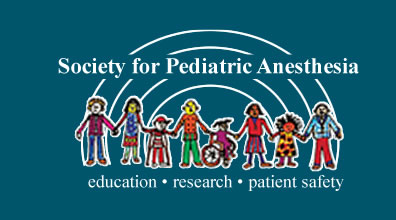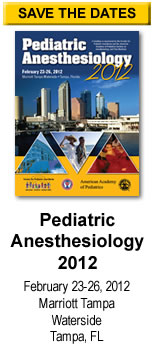![]()
LMAs in Children
- PRO
- CON
Most pediatric patients do not need an endotracheal tube (ETT) for procedures requiring general anesthesia
 By Valerie E. Armstead, MD, FAAP
By Valerie E. Armstead, MD, FAAP
Attending Anesthesiologist, St. Joseph’s Regional Medical Center & Children’s Hospital, Paterson, NJ
Affiliate: Department of Anesthesiology,
Mount Sinai School of Medicine, New York, NY
Endotracheal intubation is the OLD standard for securing the airway in adults and children. Almost 50% airways are now managed with a supraglottic airway (SGA) for general anesthesia(2). Thanks to SGAs there are more stable hemodynamics on induction and emergence. The modern maxim is when in doubt, intubation may not be the best choice for the patient.
The supraglottic airway (SGA), which is most notably represented by iterations of the laryngeal mask airway (LMA) introduced by Dr. Archie Brain, has become a very powerful airway management device. However, I am compelled to invoke the often-quoted Spider-Man theme of “with great power comes great responsibility”(1). I recall having to spend two afternoons with Dr. Rich Epstein, first observing and then being observed in the use of the LMA in pediatric patients. I was also required to watch the teaching video of Dr. Brain’s (Left-handed) LMA insertion technique as well as pass a written test before being granted LMA privileges at Thomas Jefferson University Hospital in 1992. I also received an official document of this accomplishment signed by the Hospital CEO. Based on what was proper SGA training, I believe the lack of responsibility in the use, and worse, improper teaching of the use of LMAs and other SGAs has resulted in complications that are preventable.
The major points in this discussion will delineate the circumstances whereby SGAs should be used instead of the endotracheal tube (ETT) as well as the indications and contraindications for SGAs. As a former member of the US FDA committee (ASTM international, F29.12) that established the standards for SGAs after the patent on the LMA expired, it is also my responsibility to extol the virtues of some of the 19 and counting SGAs that are in use for anesthetic care.
Although there are now a myriad of SGAs that can be used for routine general anesthetics in children, the LMA airways are the most studied and widely used(2). LMA of North America states the following on their website(3):
Indications
LMA airways are indicated for use as an alternative to the face mask for achieving and maintaining control of the airway. LMA airways are not indicated as a replacement for the endotracheal tube. LMA airways are indicated for use in:
- Routine and emergency anesthetic procedures
- Known or unexpected difficult airways
- Establishing an airway during resuscitation in the profoundly unconscious patient with absent glossopharyngeal and laryngeal reflexes when tracheal intubation is not possible
Contraindications
As a routine airway, LMA airways are contraindicated in elective patients who:
- Have not fasted or where fasting cannot be confirmed
- May have retained gastric contents
- Have fixed decreased pulmonary compliance
As a rescue airway, LMA airways are contraindicated in patients who are not profoundly unconscious and who may resist LMA airway insertion. Clinical judgment must be used to weigh the risk of regurgitation and aspiration against the potential benefit of establishing an airway.
Anyone who is familiar with the extensive use of the LMA airways outside of the US is aware that the position of the patient is not use-prohibitive; even the prone position. In fact, SGAs have been used to rapidly establish airway control during extubation of prone, anesthetized patients or in trauma situations where it is difficult to access the victims.
The notion of “when in doubt-intubate” may not be the safest alternative based on evidence comparing the LMA to ETT in general anesthesia. A systematic review of 29 randomized prospective controlled trials compared the risk of airway complications with an LMA versus an endotracheal tube (ETT) in patients receiving general anesthesia. For the patients receiving general anesthesia, the use of the LMA resulted in a statistically and clinically significant lower incidence of laryngospasm during emergence, postoperative hoarse voice, and coughing compared to ETT use(2). The risk of aspiration could not be determined because only one study reported a single case of aspiration, which was in the group using the ETT. Furthermore, the dreaded manifestations of airway irritability such as major oxygen desaturation, bronchospasm, and overall adverse events compared to the LMA with intercurrent upper respiratory (URI) can be averted with use of LMA instead of the invasive, irritating ETT according to studies conducted by Tait, Malviya, et al(4). Moreover, multiple, robust-sized, prospective studies have shown that tracheal intubation in children with URIs increases the risk of respiratory complications by 11-fold and ETT use is an independent risk factor for adverse respiratory events in children with URIs(4-6). The take away message from these & other studies should be “When in doubt-Do not intubate” for the child with URI having procedures where SGAs are an option for airway management.
Another myth that is gradually being dispelled through well-designed studies is the use of positive pressure mechanical ventilation with SGAs is prohibited during anesthesia. The standards for SGA design require the ability to provide positive pressure. Proper insertion technique and appropriate ventilation settings can provide for safe, effective ventilation for a variety of conditions and procedure durations(7). In fact, the SGAs with isolated channels for gastric decompression such as the ProSeal™ Laryngeal Mask Airway (PLMA) for children were introduced in 2004, by Dr. Archie Brain and later iterations such as the LMA Supreme™. These latest versions were designed specifically to allow positive pressure, mechanical ventilation (PPV). In a prospective, randomized study comparing ETT to PLMA investigators found that insertion of PLMA as well as ETT was performed in the first attempt in all the patients(8). Ease of insertion and conditions during insertion were comparable in both the groups. Changes in SpO2 and EtCO2 were comparable. In addition, gastric insufflation, regurgitation, pulmonary aspiration, postoperative airway complications were no different in with the PLMA or ETT. However, highly significant changes in hemodynamic parameters were observed in the ETT group. Thankfully, modern anesthesia machine ventilators also allow for complementary modes of PPV, such as pressure support when using SGAs. Therefore, the notion that children would or should be relegated to spontaneous ventilation during SGA use is not in keeping with current technology. Finally, the latest revision to “Standards for Basic Anesthetic Monitoring” by the American Society of Anesthesiologists (ASA) effective July 1, 2011 requires the use of end-tidal CO2 (etCO2) monitoring(9). This salutary addition to monitoring standards obviates any arguments regarding whatever airway or circuit system is being used. True, the etCO2 during SGA may not reflect the true etCO2; however, the same situation occurs with a cuffless or leaking ETT.
In the spirit of using scientific evidence to address legitimate versus anecdotal or theoretical problems a few more issues will be discussed.
Airway protection may actually be superior with the LMA as demonstrated by anesthesiologists who compared ETT to flexible shaft/armored LMAs in sinus surgery in pediatric patients. In this study there was significant contamination of the subglottic region with the ETT and none in the LMA group. This group concluded that the LMA exhibited a better protection of the airway than an uncuffed ETT with throat pack. The investigators theorized that the LMA covers the supraglottic and glottic airway, so blood is diverted laterally to the piriform sinuses and postcricoid regions. This effectively protects the glottic airway from these fluids, which can then be suctioned orally at the conclusion of surgery and before emergence. In contrast, the external surface of the ETT can act as a conduit for blood from the oropharynx to the larynx and tracheobronchial tree, probably by means of capillary action of the throat pack around the ETT. These investigators found the LMA a superior airway management choice. The ETT was problematic on multiple levels due to the combination of blood/secretion exposure (either visible or nonvisible). The direct stimulation of the tracheal lumen by the ETT, and the use of the throat pack might explain the prolonged recovery time and greater incidence of cough among patients in the ETT group(10).
There is also the concept of prevention of airway complications and improvement in patient satisfaction with LMA management. Drs. David Wong, Frances Chung and others at University of Toronto first presented this award-winning research at the Society for Airway Management annual meeting in 2009. In their very elegant, low tech, high concept study, an observer used a hand-held manometer to measure LMA cuff pressures in over 200 adult patients undergoing general LMA anesthesia. Patients were randomized to pressure limiting (release of intracuff pressures to less than 44 torr) or routine care (No intervention; even if intracuff pressures were in the 100s)(11). This monitoring was repeated on the hour as needed. This simple intervention resulted in statistically significant decreases sore throat and other airway complications. This simple intervention resulted in relative risk reduction of 70.6%, absolute risk reduction of 32.3%, and number needed to treat three. Because of this research, I and other anesthesiologists carry hand-held manometers that display appropriate pressure ranges for LMAs as well as for ETT cuffs. These studies by Wong and Chung raise questions about the past and ongoing complications of SGAs. Several airway product manufacturers sell manometers for around $100. This is a reasonable investment when preventing complications.
A number of the SGAs are reusable. The environmental impact of one less plastic ETT or SGA in hospital trash is very positive.
The nuances of SGA use, when conducted in a responsible manner, can further reduce or prevent complications from routine general anesthesia. It is time to stop clinging unnecessarily to the ETT. I encourage those still unfamiliar with the SGA family to attend workshops or perform due diligence before test driving.
Finally, I encourage you to join the Society for Airway Management (SAM) and attend their annual meetings. There you can learn a wide variety of airway management skills while often being taught by the inventor or someone happy to transfer their knowledge to you.
References:
- Lee S, Ditko D, Amazing Fantasy #15, August 1962
- Yu SH, Beirne OR., Laryngeal mask airways have a lower risk of airway complications compared with endotracheal intubation: a systematic review. J Oral Maxillofac Surg. 2010 Oct;68(10):2359-76.
- www.lmana.com
- Tait AR, Malviya S, Voepel-Lewis T et al. Risk factors for perioperative adverse
respiratory events in children with upper respiratory tract infections. Anesthesiology
2001;95:299-306. - Cohen MM, Cameron CB. Should you cancel the operation when a child has an upper respiratory tract infection? Anesth Analg 1991;72:282-8.
- Parnis SJ, Barker DS, Van Der Walt JH. Clinical predictors of anaesthetic complications in children with respiratory tract infections. Paediatr Anaesth 2001;11:29-40.
- Jamil S, Mehtab Alam, Usmani H, Khan M M ,Indian J Anaesthesia 2009; 53 (2):174-178
- Patel MG, Swadia V, Bansal G. Prospective randomized comparative study of use of PLMA and ET tube for airway management in children under general anaesthesia. Indian J Anaesth. 2010 Mar;54(2):109-15.
- http://www.asahq.org/For-Members/Clinical-Information/Standards-Guidelines-and-Statements.aspx: Standards for Basic Monitoring
- Webster AC, Morley-Forster PK, Janzen V, Watson J, Dain SL, Taves D, Dantzer D. Anesthesia for intranasal surgery: a comparison between tracheal intubation and the flexible reinforced laryngeal mask airway. Anesth Analg. 1999 Feb;88(2):421-5.
- Seet E, Yousaf F, Gupta S, Subramanyam R, Wong DT, Chung F.Use of manometry for laryngeal mask airway reduces postoperative pharyngolaryngeal adverse events: a prospective, randomized trial.Anesthesiology. 2010 Mar;112(3):652-7.
Most pediatric patients should have an endotracheal tube (ETT) for procedures requiring general anesthesia except for brief procedures
 By Anuradha P. Patel, MD, FRCA
By Anuradha P. Patel, MD, FRCA
Associate Professor of Anesthesiology, Section Chief of Pediatric Anesthesia
New Jersey Medical School, UMDNJ, Newark, NJ
Endotracheal intubation is the gold standard for securing the airway in adults and children. The dictum “When in doubt- intubate” holds true in most situations.
Although the laryngeal mask airway (LMA) has proven to be a safe and effective device for airway management in children and adults, there are limitations in the use of LMA’s that need to be recognized.
At the outset I am assuming that LMA’s are used in children who are breathing spontaneously under a general anesthetic. Under these conditions, the pediatric patient will be predisposed to atelectasis and carbon dioxide retention, which will be more pronounced with time. It is well known that patients under inhalation anesthesia with spontaneous respiration will have low tidal volumes with increased respiratory rates, resulting in decreased alveolar ventilation which in turn leads to decreased carbon dioxide (CO2) elimination and predisposes to pulmonary atelectasis. The semi open circle breathing system most commonly used in the USA is not the ideal breathing circuit for use in small children (under 15kg) who are breathing spontaneously due to the presence of valves and CO2 absorbent canister, which increase resistance to breathing. Use of a heat and moisture exchange (HME) device adds to the work of breathing by increasing resistance to breathing and also adds dead space.
The pediatric LMA (like ETT) is a scaled down version of the adult mask and is not designed specifically for the pediatric upper airway. Infants and young children have a larger tongue, a higher glottis and a more angled, anterior larynx than adults. When LMA are inserted in children, the incidence of partial airway obstruction is higher (2-24%) as compared to adults (0-5%). This could be due to differences in the anatomy of the pharynx and larynx and a higher likelihood of displacement of supraglottic structures by the LMA.
Capnography measurement may not be reflective of alveolar and arterial CO2 levels, with EtCO2 levels being lower. This difference is more pronounced in younger children due the fact that they have small tidal volumes and capnography equipment is not specifically designed for use in children. The resultant lower EtCO2 reading in spontaneously breathing patients gives the practitioner a false sense of security, while the child may be hypercarbic. Partial airway obstruction or malposition may further contribute to CO2 retention and is not always easily detectable from respiratory observations.
The cuff of a properly positioned, inflated LMA sits in the hypopharynx and forms a circumferential low-pressure seal on the laryngeal inlet, which is not airtight. It is possible to pass nasogastric tubes and even endoscopes posterior to the cuff into the esophagus and the stomach. The incomplete seal allows flow of gas into the stomach and predisposes to regurgitation of contents into the trachea. Leakage of gas into the stomach occurs at 15-25 cm H2O in adults and there have been case reports of aspiration of gastric contents with use of LMA. Factors predisposing to aspiration include high intragastric pressure, a decrease in lower esophageal sphincter tone, and if the LMA does not sit correctly, the esophagus may be included in the rim of the LMA cuff. The newly introduced ProSeal LMA presumably offers a better seal than the classic LMA and offers a channel for passing a sump tube.
Pharyngeal and laryngeal morbidity with the use of ETT is well described, but the supposed advantage of LMA with regard to minor pharyngeal morbidity is questionable. The reported incidence of minor complaints varies widely in the literature for both ETT and LMA. A study in adults by Reiger et al(2) found that there was no difference in the incidence of sore throat between LMA and ETT use, although the incidence of dysphonia was higher in ETT patients. However, dysphonia increased with duration of LMA use and the incidence of dysphagia was doubled and pharyngeal dryness was higher in the LMA group compared to ETT group. Splinter et al(3) reported the incidence of mild sore throat to be 13% with LMA and 5% with ETT use for minor pediatric surgery. We have all experienced the case of the difficult LMA insertion with two to three attempts resulting in trauma to the pharynx and blood on the LMA when it was removed. I have often wondered about the damage to mucosal surfaces and resultant discomfort from this trauma.
Rare but serious complications, such as vocal fold and vocal cord palsy, recurrent laryngeal nerve paralysis and bilateral vocal cord paralysis have been reported with LMA use. Malposition of the LMA, excessive cuff pressure, length of time the device is in the hypopharynx and the position of the patient have been suggested as the etiology. Nerve palsies can occur as a result of stretching and direct pressure on the recurrent laryngeal nerve and external branch of the superior laryngeal nerves, or compression between the LMA and the thyroid and criciod cartilages. Excessive pressure in the LMA cuff with resultant pressure on surrounding tissues can occur when a device is malpositioned and extra air is inserted in the cuff in an attempt to reduce leak around the LMA or by diffusion of nitrous oxide into the LMA cuff. High intracuff pressure can also cause injury to the hypopharyngeal mucosa and contribute to postoperative discomfort. It is important to note that the recommended initial inflation volumes should not be exceeded and a cuff-pressure monitoring device be used as per the manufacturer.
Distortion of pharyngeal architecture by the LMA can cause anatomical alterations of cervical structures. In a prospective study using ultrasound imaging, it was shown that the anatomic relationship of the internal jugular vein to the carotid artery changed in 8.3% patients with an LMA in place and the head in a neutral position. These effects are more pronounced with the head turned and in newborns and infants. Practitioners should be cautious when using LMA for general anesthesia for central line insertion and perhaps use ultrasound guidance for location of structures.
Since its approval for pediatric clinical practice in USA in 1998, the LMA has become a widely used, non-invasive, general-purpose airway. In recent years, there have been prospective studies in the literature describing the safe use of LMA in short duration laparoscopic surgery in children, use in prone patients and in patients undergoing adenotonsillectomy. I would argue that practitioners are misusing the device in these situations, since it was not intended for positive pressure ventilation and can lead to gastric distention. Furthermore, the LMA is a supraglottic device and does not protect the distal airway from blood and secretions. The LMA can be used as a rescue device in case of accidental extubation in the prone position, but not as a primary airway plan.
In addition to the above, I can provide a rationale against using LMA in many other situations, for surgery on the head and neck, where the head is turned to the side or surgery is expected to last longer than one hour, to name a few.
I conclude with the following thoughts: Why use an LMA in situations where the risks outweigh the benefits? Do anesthesiologists feel that it is time consuming to intubate or do they believe that endotracheal intubation should be avoided at all costs due to the fear of complications from intubation? Are they being daring or lazy? The ability to intubate is a skill that increases exponentially with training and experience. As an anesthesiologist in a teaching institution, I look for indications for intubation, not for indications to avoid it, so that I can teach safe practice and a valuable skill to future anesthesiologists.
References:
- Motoyama EK, Davis PJ in Smith’s Anesthesia for infants and children. Sixth edition, Mosby publishers.
- Reiger A, Brunne B, Hass I, et al. Laryngo-pharyngeal complaints following Laryngeal Mask Airway and Endotracheal Intubation. J Clin Anesth 1997;9:42-47
- Splinter WM, Smallman B, Rhine EJ, Komocar L. Postoperative sore throat in children and the laryngeal mask airway. Can J Anaesth. 1994;41(11):1081-3
- Endo K, Okabe Y, Maruyama Y et al. Bilateral vocal cord paralysis caused by laryngeal mask airway. Am J Otolaryngol. 2007;28(2): 126-9
- Nagaraja RG, Wilson M, Wilson G et al. The anatomic relationship between the internal jugular vein and the carotid artery in children after LMA insertion. An ultrasonographic study. Paediatr Anaesth. 2011;21(1):62-4


 Click
Click 